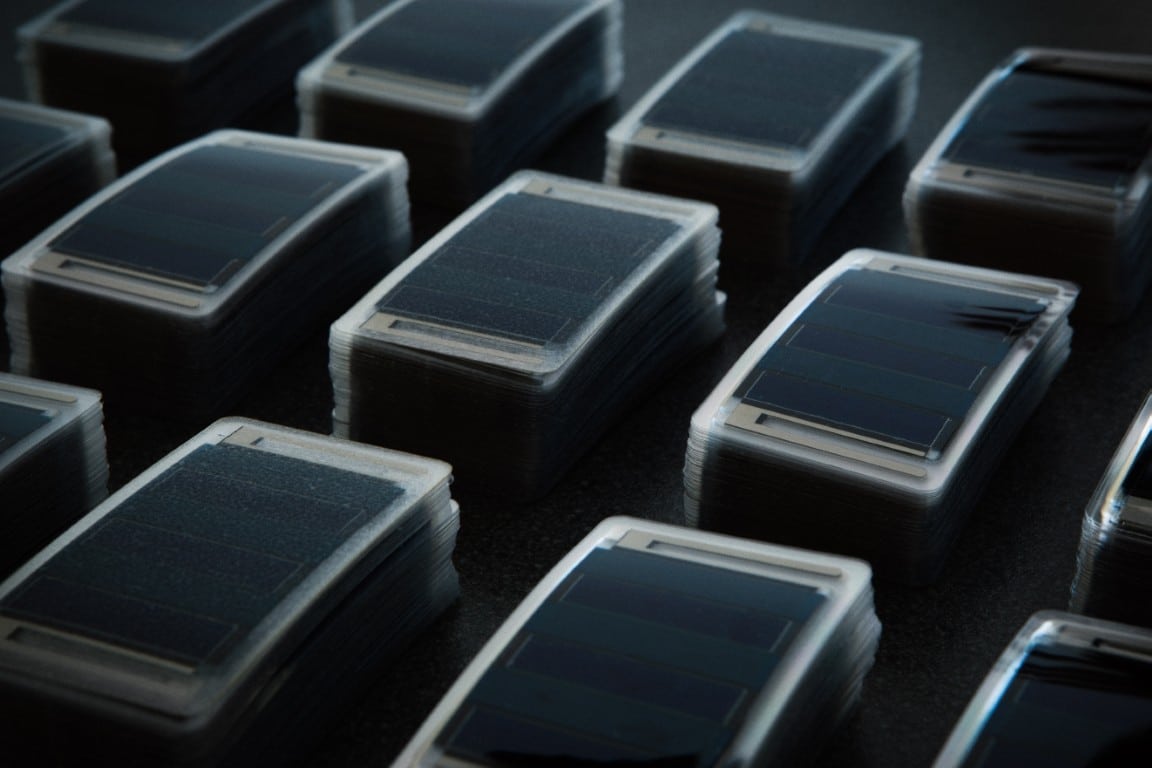Impact
Even small quantities of moss can absorb large amounts of harmful dust particles and greenhouse gases, so German Bestensee-based company Green City Solutions are harnessing the power of moss in their internet of things (IoT) CityTree and CityBreeze biotech products to target the most polluted parts of urban areas.
“With air pollution, you have the issue that it’s invisible.”
Wu
Air pollution is the biggest outstanding economic and health threat caused by human activity. A silent killer, roughly 400,000 people in Europe die because of it every year.
As many companies look for new solutions to combat air pollution, Green City Solutions founders Peter Sänger and Liang Wu tapped into the strengths of the world’s first designer: nature.
Sänger, a horticulturalist, and Wu, a computer scientist, have combined moss (one of the oldest green powers) with advanced IoT technologies to make the world’s first sustainable biotech air filter and cooling products. Their company slogan “we grow fresh air” is powerful, and they do far more than that.
The root of Green City Solutions’ IoT biotech products is moss, and finding the species that thrive best in a mid-European climate is a big part of the company’s work. Sänger and the team grow moss cultures in a novel way: at their farm on vertical mats. Of the 20,000 different moss species worldwide, Green City Solutions have narrowed their selection down to five favourite top-performing mosses they can exchange and mix.
Sänger explains they outlined seven key ecological characteristics, “from an aesthetic point of view, but also considering the performance of filtering dust, digesting dust, tolerance to stress and growth capacity and speed.”

So, what can this primeval plant do? Incredibly, the moss in Green City Solutions’ products filters up to 82% of fine dust particles thanks to electrostatic binding (the moss is negatively charged whilst fine dust is positively charged). The moss “eats” half of the fine dust it absorbs, converting it to biomass, a quarter is biodegraded by bacteria and the remaining quarter is stored in sediment.
Peatlands are famous for their carbon capture capabilities and standalone moss is no different. Half a square metre of moss can absorb a huge one kilogram of carbon dioxide. That’s more than a small forest and something to shout about as we search for ways to offset emissions.
This aptitude for absorption is partly because moss’s surface area is 30 times its size. And a large surface area also helps its final superpower of water storage and evaporation, which in Green City Solutions’ biotech results in a cooling capacity of up to 4 degrees Celsius that (if you were to use, for example, a conventional air conditioning unit) can take up to 6,500 Watts to achieve. In our changing climate of increasing heatwaves, moss offers efficient natural cooling.
Green City Solutions’ biotech products combine moss with IoT technology that monitors environmental conditions, like moisture, humidity and temperature. The IoT technology regulates these conditions with irrigation systems and ventilation to give the moss the best environment to thrive in, feeding its effectiveness.
Wu has led the team in this area and continues to improve on and add to the factors the IoT technology can track. For example, Green City Solutions’ products register when air pollution levels are higher in the area and adapt the system to filter more air. If air pollution levels are lower (like at night), energy consumed to maintain the moss’s ideal environment can be saved and the moss can rest.
The company have also participated in an international R&D project with British partners to integrate a footfall counter into their products. The same principles apply; when more people are in the vicinity, the moss works harder. Wu can track how many people are benefitting from clean filtered air.
All these elements and performance analyses mean Green City Solutions can prove (with real time data) just how powerful the moss is at filtering dust particles, absorbing carbon dioxide and reducing nearby temperatures.
“We decided to have a complex system based on plants, but also IT and IoT as a product for cities and the urban environment.”
Sänger
Green City Solutions currently have two available products: the CityTree and CityBreeze. Both have a wooden slatted design that protects and shades the moss whilst allowing air to pass through the structure. But a big difference between the two products lies in their defining design features; the CityTree is an eye-catching bench, and the CityBreeze has an LCD screen that can display adverts. Where the CityTree is always a standalone product, the CityBreeze can also be integrated into façades, bus shelters or mobility hubs.
One CityBreeze can filter up to 1,500 cubic metres of air per hour and one CityTree can filter up to 4,000 cubic metres, resulting in a 53% overall reduction in fine dust within a 1.5 metre radius.
Green City Solutions are working on a third façade greening product, called WallBreeze. Small modular IoT moss blocks can be attached to the front of office buildings or the sides of inner-city tunnels. The company are pilot testing the WallBreeze and hope to market the product by the beginning of 2022.
Whilst it may seem tempting to put moss everywhere, Green City Solutions’ products primarily focus on air pollution hotspots in urban areas rather than mass reduction across whole cities.
“This is one of the next big steps we have to make – that cities are convinced by this technology.”
Sänger
Where can you see a CityTree or CityBreeze? Right now, Green City Solutions has over 50 projects (sometimes with several products per project) running all over Europe. And the company have identified another 45,000 hotspots in European cities where they believe their biotech products could drastically improve air quality.
Sänger and Wu are also encouraging clean air networks in smaller cities. They state Cork in Ireland as an example of where they have five newly installed CityTrees and can really see both how the IoT technology has reduced air pollution and how citizens engage with the CityTrees.
Since air pollution exists in all industrialised areas, Green City Solutions have a huge market for their product range. Typically, it is local councils, large companies, real estate branches and construction companies who invest in the biotech products to integrate them into public spaces and promote a better quality of life.
The cost of a CityTree or CityBreeze is roughly 1,000 euro per month where the products are trialled for three to 12 months. After benefits and KPIs have been proven by data collected, customers can own their CityTree or CityBreeze permanently. Green City Solutions offer a bespoke service that considers project size and duration, population size and footfall.

“Our key expertise is the reduction of fine dust particles, but our secondary priority is direct CO2 capture.”
Sänger
Moss in Green City Solutions’ products captures carbon dioxide directly, but it also indirectly reduces emissions by filtering dust particles that have a global warming potential, like black carbon. Green City Solutions are working to obtain an official certification that recognises these particles as their equivalent in carbon dioxide. TÜV Süd will soon complete a report certifying this.
Sänger and Wu explain that with every biotech product they deliver, the company hopes to remove 100 tonnes of carbon dioxide from our atmosphere, amounting to a total of three million tonnes by 2030. Their products do most of this absorption, but Green City Solutions also support forest restoration activities in their region.
Green City Solutions are now focusing on refining their products further by optimising water consumption (especially in dry summers), making the IoT software more performant and able to gather wider amounts of data and improving their operational excellence.
The company has a diverse product development map; Sänger and Wu explain that first they will work on smaller modular products that have the biggest impact on reducing the effects of climate change before tackling designs that could be used indoors. Learning how to implement their biotech indoors will be a new challenge for the company, as they will have to consider completely different factors, like hygiene and artificial light.
Once considered a nuisance, moss is now growing on us. From extinguishing fires to being used as medical dressings in World War I, Green City Solutions are now enhancing its natural strengths for filtering fine dust, absorbing carbon dioxide and holding water, bringing nature’s best designs for combatting air pollution into our cities.
Green City Solutions have participated in a project funded by our Eurostars programme: an international funding programme for innovative SMEs.
Through our funding programmes, national/regional funding bodies support SMEs, large companies, universities and research organisations conducting R&D and innovation projects together beyond borders to achieve great results. Learn more about our programmes and discover whether we have a funding opportunity for your organisation.
Got an innovative idea? Explore our funding opportunities designed to support groundbreaking projects and help turn your vision into reality.
Secure the resources you need to bring your ideas to life.
See all open calls

